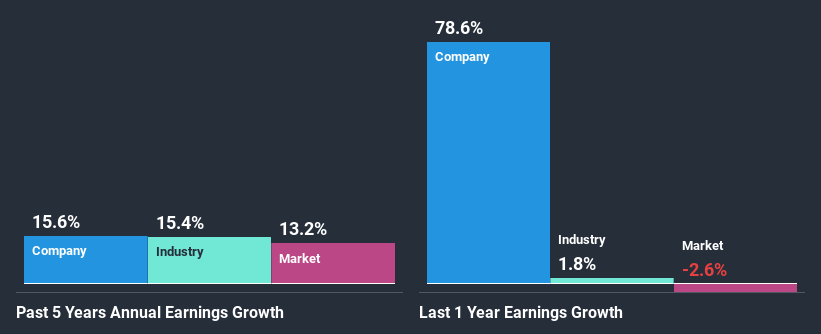Teleflex Incorporated (NYSE:TFX) Stock Has Shown Weakness Lately But Financials Look Strong: Should Prospective Shareholders Make The Leap?

Teleflex (NYSE:TFX) has had a rough month with its share price down 14%. But if you pay close attention, you might gather that its strong financials could mean that the stock could potentially see an increase in value in the long-term, given how markets usually reward companies with good financial health. Specifically, we decided to study Teleflex's ROE in this article.
Return on Equity or ROE is a test of how effectively a company is growing its value and managing investors’ money. Put another way, it reveals the company's success at turning shareholder investments into profits.
Check out our latest analysis for Teleflex
How To Calculate Return On Equity?
The formula for return on equity is:
Return on Equity = Net Profit (from continuing operations) ÷ Shareholders' Equity
So, based on the above formula, the ROE for Teleflex is:
15% = US$479m ÷ US$3.1b (Based on the trailing twelve months to June 2020).
The 'return' is the yearly profit. That means that for every $1 worth of shareholders' equity, the company generated $0.15 in profit.
What Is The Relationship Between ROE And Earnings Growth?
Thus far, we have learned that ROE measures how efficiently a company is generating its profits. We now need to evaluate how much profit the company reinvests or "retains" for future growth which then gives us an idea about the growth potential of the company. Assuming all else is equal, companies that have both a higher return on equity and higher profit retention are usually the ones that have a higher growth rate when compared to companies that don't have the same features.
Teleflex's Earnings Growth And 15% ROE
To start with, Teleflex's ROE looks acceptable. Further, the company's ROE compares quite favorably to the industry average of 12%. This certainly adds some context to Teleflex's decent 16% net income growth seen over the past five years.
Next, on comparing Teleflex's net income growth with the industry, we found that the company's reported growth is similar to the industry average growth rate of 15% in the same period.
Earnings growth is a huge factor in stock valuation. It’s important for an investor to know whether the market has priced in the company's expected earnings growth (or decline). Doing so will help them establish if the stock's future looks promising or ominous. Is Teleflex fairly valued compared to other companies? These 3 valuation measures might help you decide.
Is Teleflex Making Efficient Use Of Its Profits?
In Teleflex's case, its respectable earnings growth can probably be explained by its low three-year median payout ratio of 25% (or a retention ratio of 75%), which suggests that the company is investing most of its profits to grow its business.
Besides, Teleflex has been paying dividends for at least ten years or more. This shows that the company is committed to sharing profits with its shareholders. Existing analyst estimates suggest that the company's future payout ratio is expected to drop to 10% over the next three years. However, the company's ROE is not expected to change by much despite the lower expected payout ratio.
Summary
Overall, we are quite pleased with Teleflex's performance. Specifically, we like that the company is reinvesting a huge chunk of its profits at a high rate of return. This of course has caused the company to see substantial growth in its earnings. That being so, a study of the latest analyst forecasts show that the company is expected to see a slowdown in its future earnings growth. To know more about the company's future earnings growth forecasts take a look at this free report on analyst forecasts for the company to find out more.
This article by Simply Wall St is general in nature. It does not constitute a recommendation to buy or sell any stock, and does not take account of your objectives, or your financial situation. We aim to bring you long-term focused analysis driven by fundamental data. Note that our analysis may not factor in the latest price-sensitive company announcements or qualitative material. Simply Wall St has no position in any stocks mentioned.
Have feedback on this article? Concerned about the content? Get in touch with us directly. Alternatively, email editorial-team@simplywallst.com.

 Yahoo Finance
Yahoo Finance 
